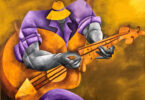
Anyone old enough to remember Groucho Marx’s TV show “You Bet Your Life” knows this question, and also, of course, the answer. Tombs, whether in cemeteries, churches or museums, often constitute works of art that also convey historical information. Above all, they inform us usually of the wealth (or lack thereof) of the deceased.
History and excavations of prehistoric sites reveal that societies around the world have had different approaches to death, and each society was convinced its approach was “correct.” Some societies buried their dead in the dirt while others cremated them and added their ashes to the dirt. Some encased the ashes in small vaults. Some societies first removed vital organs and then buried them separately from the rest of the body, perhaps a month later. In India, Parsis do not cremate or bury corpses; they leave them for vultures to feed on in a “Tower of Silence.”
In the Western world today coffins are commonplace, but we only get to see them briefly at funerals, and never again. Around the world, however, old sarcophagi are often beautiful, built as testimonials to the deceased, who sometimes arrange for them in advance of their own deaths, just as many people today plan their own funerals. Ancient Egyptians built small stone receptacles for the bodies of their dead. Over time the structures grew larger and larger until several pharaohs, starting ca. 2600 BCE, ordered pyramids for themselves, inside which they were later buried in simple tombs. The procedures for preparing their dead bodies were complicated and gruesome, including mummification and encasing the bodies in elaborate wooden sarcophagi, examples of which are in museums around the world, from Brooklyn to Turin, while we gaze in awe at the pyramids. In the late sixth century BCE, the Etruscans cremated their dead and entombed them in urns inside elaborate sarcophagi, two of which, in the Louvre and in the Villa Giulia Museum in Rome, show a couple side by side—on equal footing.
Sixtus V, whose predecessor Pope Sixtus IV was responsible for the creation of the Sistine Chapel (hence its name), pressed Michelangelo to create a crypt for his later burial, but Michelangelo was busy working on the tombs of Lorenzo and Giuliano de’Medici, who may have been more powerful. Their Renaissance tombs and the chapel that houses them are perhaps the most elaborate of Michelangelo’s sculptural ensembles. The powerful statues are symbols of human life, where competing forces interact to free the soul after death, a philosophical concept closely linked to Michelangelo’s own spirituality. He himself is in a tomb designed by Vasari in the Basilica of Santa Croce in Florence, while Raphael, at his own request, ended up in a simple tomb in the Pantheon (the oldest extant building in the world), with the inscription: “While he was alive, the mother of all things [Nature] feared she would be surpassed by him; when he died, she feared that she too would die.”
Portugal’s King Pedro I and his mistress, Inês de Castro, who was assassinated in 1355 by order of Pedro’s father, King Afonso IV, are buried in the Alcobaça Monastery. The pair of tombs are among the best works of Gothic sculpture in Portugal. Both support the effigies of the deceased surrounded by angels. The sides of the tombs are magnificently decorated with reliefs showing scenes from Saint Bartholomew’s life, as well as scenes from Pedro and Inês’ lives and with scenes from the life of Christ.

Almost all of the past queens and kings of Spain are in elaborate sarcophagi in the Monasterio del Escorial just outside Madrid, the largest Renaissance building
in the world. The main exceptions are Ferdinand and Isabella, who lie in The Royal Chapel of Granada, while their favorite explorer is in the magnificent cathedral in Seville, where, since 1899, his tomb is held aloft by figures representing the four kingdoms of Spain during Columbus’ life, Castille, Aragon, Navarre and Leon.
Most of the French monarchs’ tombs can be found in the Basilica of Saint-Denis, just north of Paris. St. Denis himself is famous for having walked there carrying his own head after being decapitated in Paris. (Louis XVI was unable to emulate him.) Napoleon lies in repose under The Dôme des Invalides, the tallest church in Paris. Louis Visconti, after a competition, created a circular hollow, or open crypt, beneath the soaring dome, with an inscription above recalling Napoleon’s wish to be buried in Paris. At its center is a massive sarcophagus which has often been described as made of red porphyry, but is actually a purple Shoksha quartzite mined, ironically, in Russian Karelia. The sarcophagus rests upon green granite from France, which rests, in turn, upon a slab of black marble. The effect is to confirm that Napoleon was the most important Frenchman ever.
Sarcophagi, and the crypts and chapels that hold them, are tourist attractions all over the world, as are some cemeteries, such as the Composer’s Corner in Vienna’s Zentralfriedhof Cemetery, with the graves of Beethoven, Brahms, Schubert and Franz and Josef Strauss, and a monument to Mozart, who is buried elsewhere in an unmarked grave. Père-Lachaise in Paris, and Eva Peron’s tomb in the Cementerio de la Recoleta in Buenos Aires, are high on most tourists’ sightseeing lists, whether or not one likes the surroundings.
In response to the enigma of death, societies have adopted a wide array of beliefs and practices regarding their dead. Ancient beliefs and burial practices intrigue and inform us, especially when the dead were provided with the accouterments of the living. Provisions for reincarnation give us an ironic window into ancient life. G&S

Photos by Norman A. Ross





Leave a Comment